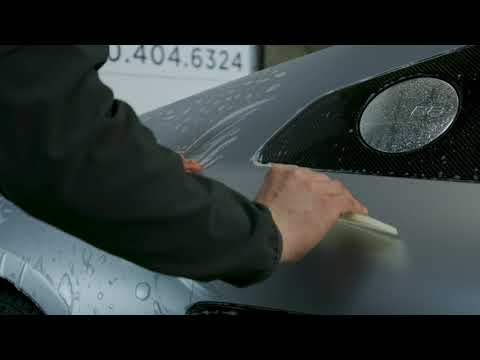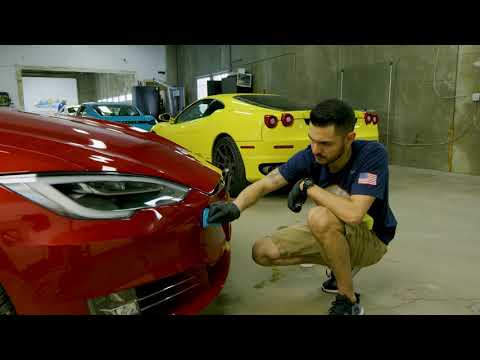Are you looking for a way to keep your car looking new while reducing your environmental impact? Eco-friendly car ceramic coatings might be just what you need! These innovative coatings provide long-lasting protection for your car's paint while also being kind to the planet.
In this blog post, we'll take a closer look at eco-friendly car ceramic coatings, their benefits, how to apply them, and more. Keep reading to discover how to take the first step towards a greener, more sustainable car care routine.
- What are Eco-Friendly Car Ceramic Coatings?
- The Benefits of Using Eco-Friendly Car Ceramic Coatings
- Are Nano Ceramic Coatings Eco-Friendly?
- How to Apply Eco-Friendly Car Ceramic Coatings
- Frequently Asked Questions
- Conclusion

What are Eco-Friendly Car Ceramic Coatings?
- Definition of ceramic coatings
- Advantages of eco-friendly ceramic coatings
- How eco-friendly ceramic coatings work
Eco-friendly car ceramic coatings are a type of protective coating applied to a car's exterior surface to help protect it from scratches, environmental pollutants, and other potential damage.
These coatings blend high-quality ceramic materials that bond to the paint, forming a solid, durable layer that can last for years with proper maintenance.
The eco-friendly aspect of these coatings lies in their chemical makeup, which typically contains fewer harsh chemicals than traditional paint protection products. This means that they have a reduced environmental impact compared to other alternatives.
Eco-friendly car ceramic coatings offer several advantages over traditional waxing or paint protection films.
One key advantage is their long-lasting, durable paint protection. Unlike traditional wax, which can wear off after a few weeks or months, ceramic coatings can last for years with proper maintenance. They are also highly resistant to scratches, rock chips, water spots, tree sap, and chemical stains, which can help keep your car looking new for longer.
Ceramic coatings are low maintenance, meaning you'll spend less time and money on car care in the long run.
How eco-friendly ceramic coatings work is fairly simple. The ceramic materials are applied to the car's exterior and then heated to a specific temperature. This helps the industrial coating bond with the paint, forming a strong, durable layer that protects it from damage. The ceramic coating also creates a glossy finish that gives your vehicle an eye-catching shine.
Overall, automotive coatings are a great way to keep your car looking its best while being kind to the environment. If you're looking for an eco-friendly way to protect your vehicle, this is a great option to consider.
The Benefits of Using Eco-Friendly Car Ceramic Coatings
- Better protection for your car's paint
- Long-lasting protection
- Low maintenance
- Resistance to scratches and chemical damage
- Reduced environmental impact
The benefits of using eco-friendly car ceramic coatings are numerous. First, they offer superior protection for your car's paint. This means that your car will be less vulnerable to scratches, environmental pollutants, and other potential sources of damage.
Ceramic coatings provide additional protection and are highly durable, meaning they can last for years with proper care. This can save you money on car care in the long run by reducing the need for frequent waxing or other treatments.
Another benefit of ceramic coating treatments is their low environmental impact. Because they contain fewer harsh chemicals than traditional paint protection products, they are less environmentally harmful. This means that using a ceramic coating product can help you reduce your carbon footprint and do your part to protect the planet.
Additionally, ceramic coatings can enhance the overall appearance of your car, making it look like new even after years of use. They offer a high-gloss finish that gives your car a sleek, polished look that will turn heads.

Are Nano Ceramic Coatings Eco-Friendly?
Nano ceramic coatings are generally considered eco-friendly because they are free from harmful chemicals such as volatile organic compounds (VOCs) that can be released into the environment during application.
Additionally, they can help reduce the amount of water and chemicals needed for car washing, which can positively impact the environment.
It is essential to note that some ceramic coatings may contain trace amounts of heavy metals or other potentially harmful substances. Hence, it is vital to research and chooses a reputable brand that prioritizes environmental sustainability and safety.
How to Apply Eco-Friendly Car Ceramic Coatings
- Preparation of the car's surface
- The application process
- Curing and drying time
- Proper maintenance of the ceramic coating
Correctly applying an eco-friendly car ceramic coating is crucial to achieving the desired results.
The first step in the process is to clean and prepare the surface of your car thoroughly. This involves washing the car to remove any dirt or debris, followed by a clay bar treatment to remove any contaminants that are on the painted surface.
Once the surface is clean, it's essential to make sure it's completely dry before applying the ceramic car coating. This can be done with a microfiber towel or a compressed air blower.
Once the surface is clean and dry, it's time to apply the ceramic coating. This is typically done with a foam applicator pad, which is used to apply the coating in a thin, even layer. It's essential to work in small sections at a time, evenly distributing the coating across the car's surface.
Once the coating has been applied, it must cure for some time. This can vary depending on the specific product being used but typically takes anywhere from 24-48 hours. During this time, it is essential to avoid getting the surface wet or exposing it to extreme temperatures or direct sunlight. Once the coating is fully cured, your car will have a high-gloss finish that is highly resistant to scratches and other damage.
Proper maintenance is essential to ensure the longevity and effectiveness of your eco-friendly car ceramic coating. After applying the ceramic car coating, it's important to avoid washing the car for at least 48 hours to allow the coating to fully cure.
After this time, washing the car regularly is recommended to remove dirt and debris that can accumulate on the surface.
However, using a car shampoo designed explicitly for ceramic coatings is essential. Using regular household cleaning products can damage the coating and reduce its effectiveness. It's also important to avoid using abrasive materials such as scrub brushes or rough sponges, as these can scratch the surface of the coating.
In addition to regular washing, applying a maintenance coating for cars every 6-12 months is also recommended. This involves applying a thin layer of ceramic coating over the existing coating to restore its protective properties and enhance its shine.
Following the manufacturer's instructions when applying the maintenance coating is essential, as the process can vary depending on the product used.
By following these maintenance guidelines, you can help ensure that your ceramic coating continues to provide long-lasting protection for your car's paint surface.











